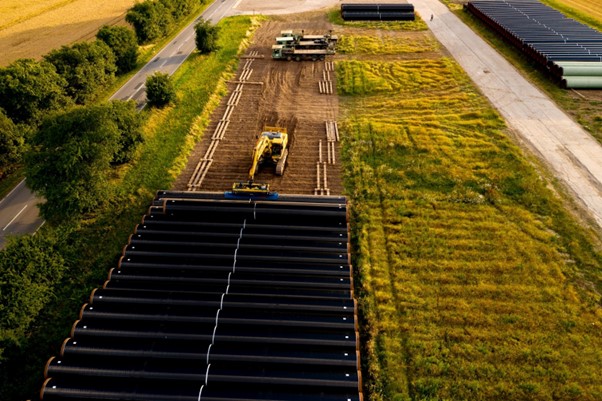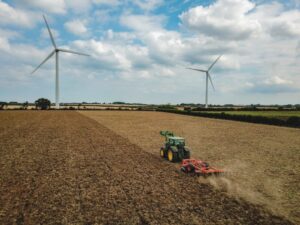Smart Agricultural Construction: How Technology Is Transforming Farm Infrastructure

As agriculture evolves to meet the demands of a growing population and adapt to a changing climate, the infrastructure supporting it must evolve too. Agricultural construction today is no longer just about building barns and storage facilities — it’s about creating smart, sustainable systems that work in harmony with the environment and improve operational efficiency. Technology makes this possible, offering tools that address complex challenges like soil degradation, water management, and high energy consumption.
What sets modern farm structures apart isn’t just what they’re made of, but what they can do. Buildings now collect rainwater, generate clean energy, and create detailed reports on crop and livestock conditions. These features, when connected through a smart agriculture platform, give farmers unprecedented control and insight. The result is farm infrastructure that reduces costs, increases yields, and heals the environment rather than harming it. This isn’t just a technical upgrade — it’s a complete rethinking of what buildings can contribute to agriculture.
Environmental Hurdles In Agricultural Construction
Between the dream of feeding the world and the reality of building the structures to do so lies a landscape of challenges as old as farming itself. These difficulties reveal the complex interplay between built environments and natural systems:
- Cutting down forests. Agricultural building projects often require clearing trees, destroying habitats for wildlife and reducing biodiversity, with dramatic evidence in Brazil’s soy fields and Indonesia’s oil palm plantations.
- Soil quality degradation. Construction activities disturb soil structure, while heavy machinery causes compaction that reduces fertility, water infiltration, and plant root development.
- Water management problems. Agricultural structures often require complex irrigation systems that, when poorly designed and not integrated with any precision agriculture monitoring system, waste water and potentially contaminate surrounding water bodies.
- Climate resilience issues. Extreme weather events increasingly damage agricultural infrastructure, while changing climate patterns require more resilient designs for greenhouses, storage facilities, and irrigation systems.
- High energy consumption. Running modern farm buildings — especially those with heating, cooling, or automated systems — needs lots of electricity, which is expensive and often relies on fossil fuels harmful to the environment.
- Loss of arable land. Expanding agricultural facilities sometimes requires building on arable lands, reducing the amount of productive land available for future use.
These difficulties create a clear boundary between what we need to grow and what the planet can provide, forcing us to build more wisely.
Modern Technologies For Sustainable Agricultural Construction
The marriage of technology and agricultural construction offers solutions to the sector’s most pressing challenges. Where traditional building methods often damaged the environment, today’s smart technologies – incorporating remote farm monitoring – enable precise, efficient, and sustainable approaches to creating agricultural infrastructure:
- Satellites, drones, and GIS technology. What once required weeks of ground-level measurements now takes hours as aerial data and GIS-based crop monitoring software provide real-time visual insights on drainage patterns, soil variations, and habitat zones, reducing project delays and improving oversight. Geographic information systems help identify the best construction sites, preserving arable land and minimizing environmental impact.
- Machine control and RTK technology. Precision is critical when preparing land for agricultural infrastructure. Machine control systems, aided by farm monitoring insights and guided by GPS and RTK (Real-Time Kinematic) technology, allow construction equipment to operate with exceptional accuracy. This reduces soil disturbance, prevents compaction, and preserves the quality of farmland while minimizing costly errors.
- Innovative construction materials. Modern agricultural buildings require durability and resilience. Advanced materials like corrosion-resistant metals and recycled composites extend the lifespan of infrastructure while minimizing maintenance needs. These materials also offer better protection against extreme weather conditions, enhancing climate resilience.
- Soil reclamation technologies. Post-construction treatments incorporating biochar and organic amendments restore soil structure and fertility, counteracting the damage from heavy machinery and enabling faster recovery of disturbed land.
- Smart automation systems. Agricultural facilities like greenhouses and storage units benefit greatly from automation. IoT-powered climate control systems adjust temperature, humidity, and carbon dioxide levels in real time, ensuring optimal growing conditions with minimal energy use. Automated irrigation systems backed by satellite crop monitoring further improve efficiency by delivering water based on real-time soil and weather data.
- Renewable energy solutions. Energy efficiency is crucial for sustainable agricultural construction. Solar panels and wind turbines provide clean, renewable power, reducing reliance on fossil fuels. Combined with energy-saving systems like LED lighting and automated HVAC (Heating, Ventilation, & Air Conditioning) controls, they help lower operational costs and environmental impact.
To stay viable in a world of increasing environmental constraints, agricultural construction must embrace these technologies as a necessity, not just an improvement.
Future Of Agricultural Construction
With the right advancements, agricultural construction could enter a new phase where buildings actively contribute to farm productivity. IoT networks and agriculture monitoring systems will enable barns to “know” when livestock need attention and storage facilities to maintain ideal conditions for specific crop varieties automatically. Construction materials will increasingly come from the farm itself — compressed agricultural waste products and mycelium-based composites that sequester carbon while providing structural integrity. Modular designs will allow buildings to expand or contract seasonally as needed.
Water infrastructure will move beyond conservation to active purification, with constructed wetlands and biofilters integrated into building footprints. Energy systems will respond to farm activities, ramping up power during harvest and scaling back during dormant periods. Perhaps most significantly, these buildings will collect and analyse their own performance data, constantly evolving to meet the specific needs of individual farms rather than following one-size-fits-all designs.
The true innovation in agricultural construction lies not in any single technology but in how these farm monitoring and management systems work together, creating buildings that adapt to their environment rather than fighting against it. As these technologies mature and integrate, we approach a future where agricultural structures don’t merely house farming activities but actively participate in the farming process — sensing, responding, and optimizing without human intervention.



